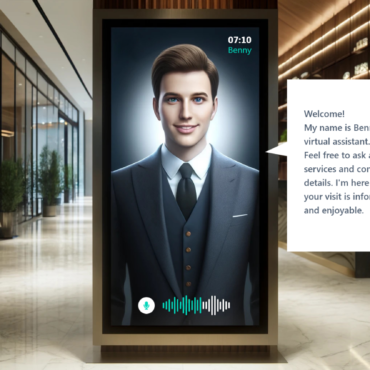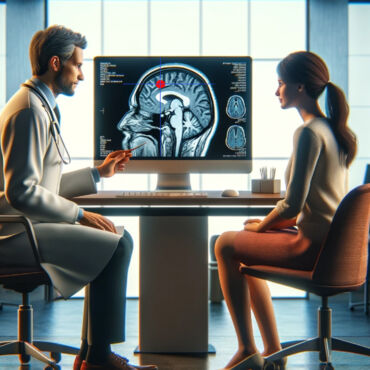The Power of Generative AI
Implementing Generative AI in your business to drive innovation, increase efficiency, and gain a competitive advantage in your industry
Generative AI has become a popular technology in recent months and even years, enabling companies to create unique and diverse content, and designs, and automate time-consuming activities. However, implementing generative AI solutions in your organization can be challenging due to various technical, ethical, and legal considerations. In our blog article, you’ll learn how to take advantage of generative AI without running into these challenges and how you can implement generative AI in your organization.
Generative AI is a subset of artificial intelligence that involves creating algorithms and models that can generate new and unique data, such as text, images and audio. Unlike traditional AI systems that need to be trained to solve one very specific issue, generative AI allows for completing a multitude of different tasks using a single large model, without the need for extensive training or large datasets to adapt for each task.

- OpenAI’s GPT-3 and GPT-4: GPT-family (Generative Pre-trained Transformer) are a series of large language models (LLM) that are capable of generating human-like text. They can be used in a multitude of applications such as language translation, chatbots, and content creation.
- ChatGPT: is an application based on the GPT 3.5 and GPT 4 models, that have been specifically adapted for engaging in human-like conversations. It uses reinforcement learning from human feedback, to even better react to human instructions than the previous multipurpose models.
- DALL-E: DALL-E is a Generative AI model developed by OpenAI that can generate images from textual descriptions. It works by interpreting the text and then generating an image that matches the description.
- Midjourney: Similar to DALL-E is a generative AI model for generating images from natural language descriptions, called prompts. Depending on the quality and level of detail of prompts, it allows for achieving different quality of generated pictures, including advanced artwork pieces.
- Stable Diffusion: Similar to Dall-E and Midjourney, it’s as well a text-to-image model, used for generating detailed images based on prompts (natural language descriptions), but also editing input pictures based on other pictures and text descriptions – for example in painting, creating images in a chosen style or a mix of different concepts. In contrast to the other models, Stable Diffusion is an open-source project.
- DeepDream: DeepDream uses a convolutional neural network to analyze an input image and then enhance certain features to create a new image. Users can customize the process by adjusting various settings such as layer selection and a number of iterations. The resulting images can be highly detailed and abstract, making it a popular tool for artists, designers, and hobbyists.
These are just a few examples of well-known solutions that use Generative AI. As the technology continues to advance, we can expect to see many more innovative applications of Generative AI not only on the level of specific models but also it’s applications in various industries (see exemplary applications in different industries – Read more)
With the help of specialized AI experts, companies can even use their own custom Generative AI solutions that are tailored to their specific business needs and processes, which can lead to improved efficiency, productivity, and profitability.
Generative AI has rapidly become one of the most exciting and rapidly evolving areas of artificial intelligence. From image and text generation to music composition and video game design, Generative AI is revolutionizing how we approach creative problem-solving in business. However, building a successful Generative AI project is no small feat. It requires a deep understanding of the technical aspects and limitations of Generative AI as well as the creativity to generate novel solutions that are tailored to specific business needs.
To start a successful Generative AI project, the first step is to clearly define the goals and objectives of the project. This includes identifying the specific business problem or opportunity that the project aims to address, as well as the desired outcomes and benefits. Once these goals have been defined, it’s important to assemble a team of experts with the necessary skills and experience to execute the project successfully.
The technical aspects of building a Generative AI project are complex, but essential. It is critical to select the right algorithms, models, and tools that are best suited for the project. This requires a deep understanding of the latest developments in the field of Generative AI, as well as an ability to integrate and fine-tune these technologies to meet specific project requirements.
Another key consideration in building a successful Generative AI project is data quality. The success of any Generative AI project depends on the availability and quality of data that is used to develop and test the system. It is important to ensure that data is comprehensive, relevant, and diverse enough to allow the Generative AI system to generate accurate and useful insights.
It is important to develop a set of tests mimicking as close as possible the real-life scenarios and think of possible border cases, also including the current limitations of the technologies – such as model’s hallucinations, possible bias or working with niche domain knowledge.
Making sure that we analyze all possibilities that this technology can bring to solving our business issue, mixed with the profound knowledge of its current limitations and techniques to mitigate them, can allow us to very quickly build stunning business solutions.
If you want to quickly start your Generative AI project and make sure to avoid repetitive issues with project implementations, consider working with companies focusing on Generative AI consulting.
At theBlue.ai we use many years of experience working on AI projects, including working already with the first generative AI architectures a few years back, to find the best-suited solutions to your business challenges. We can help you with data optimization and integration of the systems. Our team has a deep understanding of the technical aspects of prompt engineering and Generative AI, including the use of natural language processing (NLP) and machine learning (ML) to create more personalized and effective solutions. We can help you leverage the power of Generative AI to generate text, images, and other media that are tailored to your specific needs and objectives.
In addition to technical expertise, our team is committed to delivering solutions that are ethical, transparent, and socially responsible. We believe that the responsible use of AI is essential for building trust and creating value for all stakeholders.
To ensure the success of your Generative AI implementation, we work closely with you to understand your business goals, data requirements, and technical infrastructure. We then develop a customized solution that meets your specific needs, leveraging the latest tools and techniques in AI.
Whether you are looking to optimize your customer experience, streamline your operations, or develop new products and services, our team can help you unlock the full potential of Generative AI. Contact us today to learn more about how we can help you achieve your business goals through AI-powered solutions.





